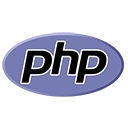Object-oriented programming (OOP) is a fundamental concept in modern web development. In this guide, we'll provide an in-depth overview of PHP classes and objects, covering the basics, class creation, object instantiation, properties, methods, and best practices. Understanding OOP with PHP is essential for building scalable and maintainable web applications.
1. Introduction to Object-Oriented Programming
Let's start by understanding the concept of object-oriented programming and why it's important in PHP development.
2. Creating Classes
Learn how to create classes in PHP, defining attributes (properties) and behaviors (methods).
class Person {
public $name;
public $age;
public function sayHello() {
echo 'Hello, my name is ' . $this->name . ' and I am ' . $this->age . ' years old.';
}
}
?> 3. Instantiating Objects
Explore how to create objects (instances) of a class and access their properties and methods.
$person1 = new Person();
$person1->name = 'John';
$person1->age = 30;
$person1->sayHello();
?> 4. Encapsulation and Access Modifiers
Understand the concept of encapsulation and access modifiers (public, private, protected) for controlling access to class members.
5. Inheritance and Polymorphism
Learn about inheritance, extending classes, and polymorphism for creating class hierarchies and overriding methods.
6. Best Practices
Learn best practices for class and object design, including proper naming conventions, separation of concerns, and code organization.
7. Conclusion
You've now gained an in-depth understanding of PHP classes and objects, a core concept in object-oriented programming. Classes and objects allow you to create reusable and structured code for building complex web applications.
To become proficient in OOP with PHP, practice creating classes and objects, design class hierarchies, and apply best practices for maintainable and scalable code.

